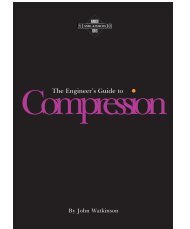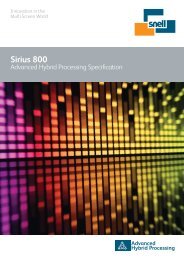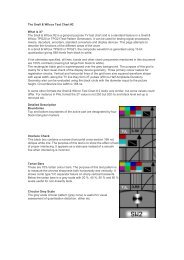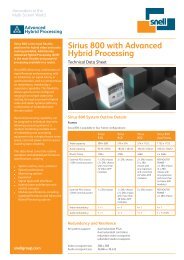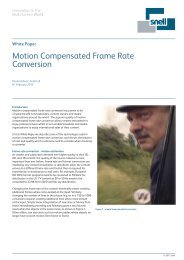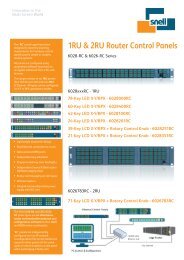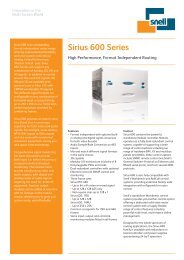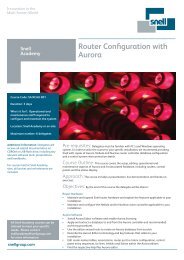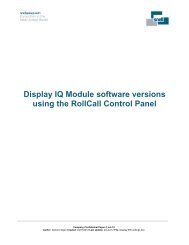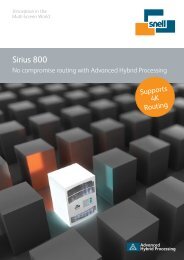The Engineer's Guide to Standards Conversion - Snell
The Engineer's Guide to Standards Conversion - Snell
The Engineer's Guide to Standards Conversion - Snell
Create successful ePaper yourself
Turn your PDF publications into a flip-book with our unique Google optimized e-Paper software.
SECTION 4 - APPLICATIONS<br />
4.1 Up and down converters<br />
<strong>Conversion</strong> between HDTV and SDTV requires some additional processes.<br />
HDTV formats have an aspect ratio of 16:9 whereas SDTV uses 4:3.<br />
Downconversion offers various ways of handling the mismatch. <strong>The</strong> picture may be<br />
displayed full height with the edges cropped, or full width with black bars above<br />
and below. It is also possible <strong>to</strong> apply a variable degree of anamorphic compression.<br />
<strong>The</strong>se processes involve the horizontal dimension which is not affected by 525/625<br />
conversion.<br />
<strong>The</strong>se converters are truly three dimensional, because in addition <strong>to</strong> converting<br />
the number of lines in the picture and the field rate, it is necessary <strong>to</strong> filter the<br />
horizontal axis <strong>to</strong> reduce the input bandwidth <strong>to</strong> that allowed in the output<br />
standard and <strong>to</strong> change the aspect ratio. <strong>The</strong> horizontal axis is not involved with<br />
interlace and so the horizontal filtering may be performed prior <strong>to</strong> the vertical<br />
temporal filtering or simultaneously without any performance penalty. In display<br />
line doublers similar processes are required.<br />
4.2 Field rate doubling<br />
Field rate doublers are designed <strong>to</strong> eliminate flicker on bright, large screen<br />
displays by raising the field rate. In some respects the field rate change is easier than<br />
in a 50/60Hz converter because the output field rate can be twice the input rate and<br />
synchronous with it. <strong>The</strong>n the output fields have a single constant temporal<br />
relationship with the input fields which reduces the number of coefficients required.<br />
However, with a large display the loss of resolution due <strong>to</strong> conventional conversion<br />
may not be acceptable and motion compensation will be necessary.<br />
4.3 DEFT<br />
In telecine transfer the 24 Hz frame rate of film is incompatible with 50 or 60Hz<br />
video. Traditionally some liberties are taken because there was until recently no<br />
alternative. In 50Hz telecine the film is driven at 25 fps, not 24, so that each frame<br />
results in two fields. In 60Hz telecine the film runs at 24 fps, but odd frames result<br />
in two fields, even frames result in three fields; the well known 3:2 pulldown. On<br />
average there are two and a half fields per film frame giving a field rate of 60 Hz.<br />
<strong>The</strong> field repetition of telecine causes motion judder. <strong>The</strong> motion portrayal of<br />
telecine is shown in Fig 4.3.1.<br />
52



